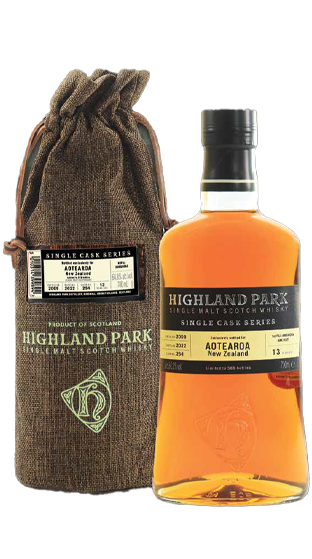HIGHLAND PARK
Remote, windswept and rugged, the Orkney islands rise where the ferocious waters of the Atlantic and the North Sea meet. As they say at Highland Park, Orkney stands proudly apart. The story of both the distillery and its Orkney home cannot be told without reference to hundreds of years of Viking rule, and indeed it is much of this history that provides both Highland Park’s inspiration and its lifeblood.
As part of a sprawling Norwegian kingdom, Orkney was the seat of Viking Earls from the ninth century right up until it was absorbed into Scotland as part of a dowry in 1472. The Earls, as one might expect of Vikings, boasted many warriors, but also some capable administrators and even the martyred saint Magnus, whose name was given to the cathedral in the islands’ largest town, Kirkwall.
Highland Park’s own founder was another Viking Magnus, a butcher and church officer by day, and whisky distiller and smuggler by night. The location of his illicit still overlooking Kirkwall remains the site of Highland Park today. Traditions established by Magnus remain the touchstones for Highland Park. They are one of the few distilleries to still use hand-turned floor maltings – a painstaking process.
Peat is an important part of the whisky, but the style here is quite unique. As on Islay, few trees can survive Orkney’s winds, but the character of the peat itself is markedly different. Unlike the medicinal and maritime flavour of Islay, Orkney produces a highly aromatic character from its ancient heather base. Added refinement comes from the exclusive use of sherry casks, producing a final whisky that is smoky, fragrant and extremely rich in flavour.




 2023 Double Gold
2023 Double Gold 99/100
99/100 Gold Medal Winner
Gold Medal Winner Trophy Winner
Trophy Winner Vegan Friendly Wines
Vegan Friendly Wines